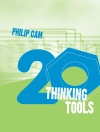‘Very practical and user-friendly . . .’
–Linda R. Kroll, Professor
Department of Education, Mills College
Build student-centered learning into your standards-based curriculum and lesson plans!
Educators expect learners to solve problems, think critically, communicate effectively, and collaborate well. These complex processes require young learners to engage in active learning and to understand that their own experience is the foundation for new learning. They also require teachers to move from the traditional role of ‘sage on the stage’ to the new role of ‘guide on the side.’
Constructivist Learning Design offers teachers a six-step framework for lesson planning and assessment:
- Situation: develop goals, tasks, and curriculum standards
- Grouping: group students and materials, and use cooperative learning
- Bridge: recall prior knowledge using students′ cognitive maps, skills, values, motivation, and expectations
- Task: use higher-level thinking skills and problem-based learning
- Exhibit: arrange student portfolios and work samples
- Reflection: synthesize critical thinking and knowledge
With clear classroom applications and ready-to-use planning templates, this research-based resource guides teachers through the complex process of aligning constructivist learning events with standards-based curriculum. Engage students in tasks, help them think for themselves, and support them in making meaning of their learning!
قائمة المحتويات
Preface
Acknowledgments
About the Authors
Introduction: Learning Design
Situation Section: Constructivist Learning Design
Groups Section: Learning Considerations
Bridge Section: What Is Learning?
Task Section: Learning Characteristics
Exhibit: Fairy Tales Learning Episodes
Reflection Section: Precedents for Constructivist Learning Design
Concluding Remarks: Where Do We Stand?
Chapter 1: Designing Situations
Situation Section: Defining Guiding Questions
Groups Section: Co-constructing the CLD
Bridge Section: Questions for Analyzing Situations
Task Section: Revising a Situation Element
Exhibit Section: Example Situation Elements
Reflection Section: Precedents for a Situation Element
Concluding Remarks: Thoughts on Designing Situations
Chapter 2: Organizing Groups
Situation Section: Deciding on Groups
Groups Section: The Power of Collaborative Thinking
Bridge Section: Questions for Forming Groups
Task Section: Revising a Groups Element
Exhibit Section: Example Groups Elements
Reflection Section: Precedents for a Groups Element
Concluding Remarks: Thoughts on Arranging Groups
Chapter 3: Building Bridges
Situation Section: Surfacing Prior Knowledge
Groups Section: Connecting With Students’ Thinking
Bridge Section: Questions for Structuring Bridges
Task Section: Revising a Bridge Element
Exhibit Section: Example Bridge Elements
Reflection Section: Precedents for a Bridge Element
Concluding Remarks: Thoughts on Building Bridges
Chapter 4: Crafting Tasks
Situation Section: Crafting a Task
Groups Section: Thinking Together to Make Meaning
Bridge Section: Questions for Framing Tasks
Task Section: Revising a Task Element
Exhibit Section: Example Task Elements
Reflection Section: Precedents for a Task element
Concluding Remarks: Thoughts on Crafting Tasks
Chapter 5: Arranging Exhibits
Situation Section: Defining the Nature of an Exhibit
Groups Section: The Power of Students Presenting their Thinking
Bridge Section: Questions for Encouraging Exhibits
Task Section: Revising an Exhibit Element
Exhibit Section: Example Exhibit Elements
Reflection Section: Precedents for an Exhibit Element
Concluding Remarks: Thoughts on Arranging Exhibits
Chapter 6: Leading Reflections
Situation Section: Leading Reflection on Thinking
Groups Section: Reflecting on Making Meaning
Bridge Section: Questions for Inviting Reflections
Task Section: Revising a Reflection Element
Exhibit Section: Example Reflection Elements
Reflection Section: Precedents for a Reflection Element
Concluding Remarks: Thoughts on Leading Reflections
Chapter 7: Teaching Designs
Dancing a Design
Pacing, Rhythm, and Footwork
Choosing Music for the Dance
Rehearsing the Dance
A Tale of Three Dancers
Dancing Together
Inviting Administrators to the Dance
Inviting Others to the Dance
Resources
References
Index
عن المؤلف
Michelle Collay is a School Coach for the Bay Area Coalition for Equitable Schools (Bay CES) in Oakland, California, a private non-profit organization supporting urban small school initiatives. She supports school leader development and coordinates classroom-based teacher inquiry for the purposes of improving student achievement. Previously, she worked as a faculty member and administrator in teacher preparation and graduate teacher education in public and private universities. Collay conducts seminars and workshops about professional learning communities, constructivist learning design, and portfolio development. Before completing doctoral studies in Curriculum and Instruction at the University of Oregon, she taught music and mathematics in elementary and junior high school and continues to play the bassoon in local ensembles. She and her husband, George Gagnon, write, teach, and parent together and are parent leaders in their children’s neighborhood school in Oakland.











